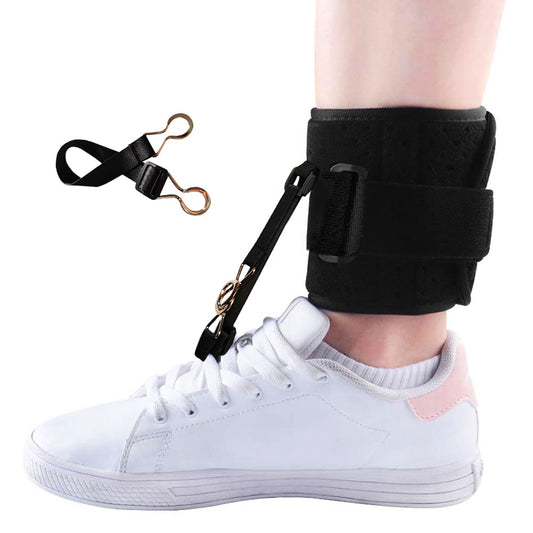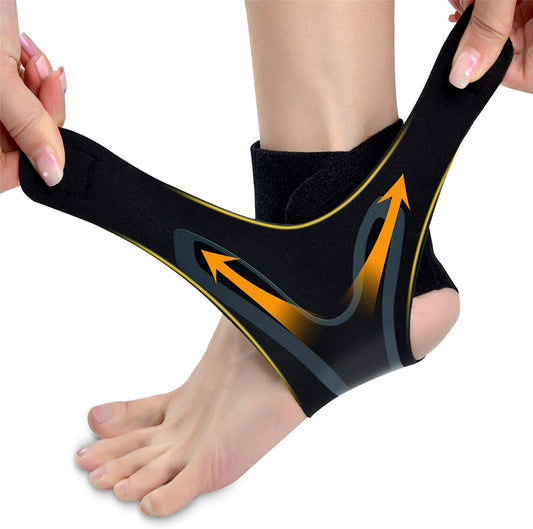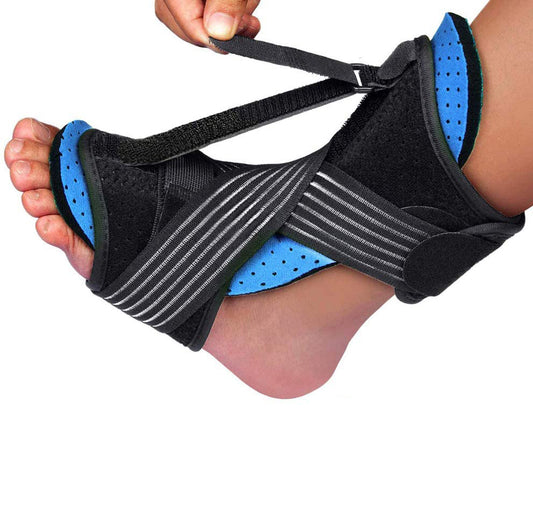-
Ankle Brace, Lace Up Adjustable Support – for Running, Basketball, Injury Recovery, Sprain! Ankle Wrap for Men Women
Regular price $21.99 USDRegular price$21.99 USDSale price $21.99 USD -
Adjustable Drop Foot Brace Foot Up Afo Brace Unisex Fits for Right /Left Foot Orthosis Ankle Brace Support, Improve Walking Gait, Effective Relieve Pain for Achilles Tendon
Regular price $22.99 USDRegular price$26.99 USDSale price $22.99 USDSale -
Plantar Fasciitis Socks - Compression Foot Sleeves for Men & Women, Achilles Tendonitis Pain Relief, Better than Night Splint Brace, Ankle Support, Heel Spurs, Eases Swelling
Regular price $19.99 USDRegular price$32.99 USDSale price $19.99 USDSale -
Ankle Support Brace, Adjustable Ankle Brace with Breathable & Elastic Nylon Material, Comfortable Ankle Wrap Sports Protect Against Chronic Ankle Strain Sprains Fatigue
Regular price $13.99 USDRegular price$23.99 USDSale price $13.99 USDSale -
Ankle Support Brace, Breathable Neoprene Sleeve, Adjustable Wrap
Regular price $15.99 USDRegular price$15.99 USDSale price $15.99 USD -
New Upgraded Night Splint for Plantar Fasciitis, Breathable and Adjustable Sleep Support Foot Drop Orthotic Brace for Plantar Fasciitis, Arch Foot Pain, Achilles Tendonitis Support for Women, Men
Regular price $32.99 USDRegular price$56.00 USDSale price $32.99 USDSale
Collection: Ankle Brace : Enhanced Support and Recovery Solutions for Active Lifestyles
Introduction to Ankle Braces: Essential Support for Active Lifestyles
Ankle braces are a crucial component for anyone seeking to prevent injuries or recover from them effectively. Whether you're an athlete, someone recovering from surgery, or just looking for added support in daily activities, ankle braces offer indispensable support and protection. Our extensive range of ankle braces caters to various needs, from addressing ankle instability to enhancing performance in high-impact sports.
Who Needs Ankle Braces?
Ankle braces are designed for a wide variety of individuals including:
- Athletes participating in sports like basketball, football, or tennis.
- Individuals recovering from ankle surgery or injuries.
- Anyone experiencing chronic pain or conditions like arthritis, plantar fasciitis, and tendinitis.
- Active individuals who frequently hike or engage in other strenuous activities.
Why You Need Ankle Braces
Ankle braces provide the necessary stability to prevent injuries, especially during activities involving frequent changes in direction. They're also effective in:
- Providing support and reducing strain on the ankle joint.
- Offering therapeutic warmth to alleviate pain and stiffness.
- Allowing those recovering from injuries to participate safely in physical activities.
Identifying the Need for Ankle Braces
You should consider an ankle brace if:
- You have experienced previous ankle injuries and want to prevent recurrence.
- You feel instability or weakness during physical activities.
- You have chronic conditions causing persistent ankle pain or stiffness.
- You're looking to improve your walking gait and relieve pain caused by Achilles tendon issues. For more on how our ankle braces can help, check out our Adjustable Brace Options.

Characteristics of Our Ankle Braces
Our collection features a variety of braces designed to meet specific needs:
-
Lace-Up Adjustable Braces: Perfect for running and intensive sports, offering customized support. Learn more about our Ankle Brace Solutions.
-
Ankle Support Wraps: Made with breathable and elastic nylon, these braces provide comfort while protecting against chronic strain and fatigue. Discover our Comfortable Ankle Wraps.
Common Questions About Ankle Brace Usage
How Long Should I Wear Ankle Braces?
The duration depends on your specific condition. For general instability or prevention during sports, wearing during activity is recommended. For post-injury or surgical recovery, follow your doctor's advice.
Are Ankle Braces Comfortable for Daily Wear?
Yes, most braces are designed for comfort and can be worn throughout the day. Make sure to select the right size and material for optimal breathability and fit.
Improvements from Using Ankle Braces
Regular use of ankle braces can improve joint stability, reduce inflammation, and enhance overall mobility. They're particularly beneficial for individuals of all ages engaging in activities with high ankle strain.

Conclusion: ZSZBACE Brand Quality and Assurance
At ZSZBACE, we pride ourselves on years of expertise in manufacturing top-quality ankle braces. Our commitment to using superior materials and providing professional service ensures customer satisfaction. Whether you're looking for daily support or specialized braces for sports, our collection has you covered with the reliability and comfort you deserve.
For inquiries or further assistance, feel free to reach out to our friendly support team. Explore our full range of products by visiting our Ankle Brace Collection.






